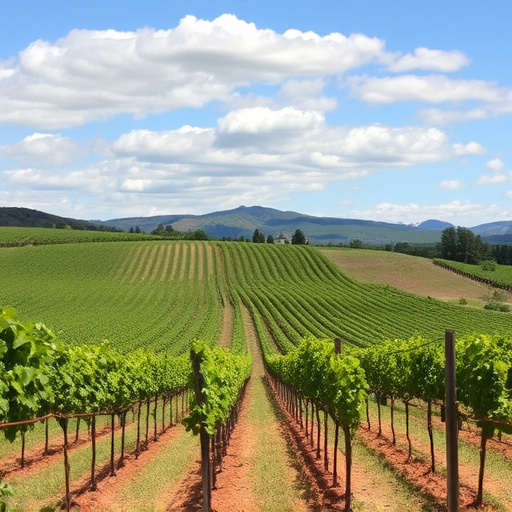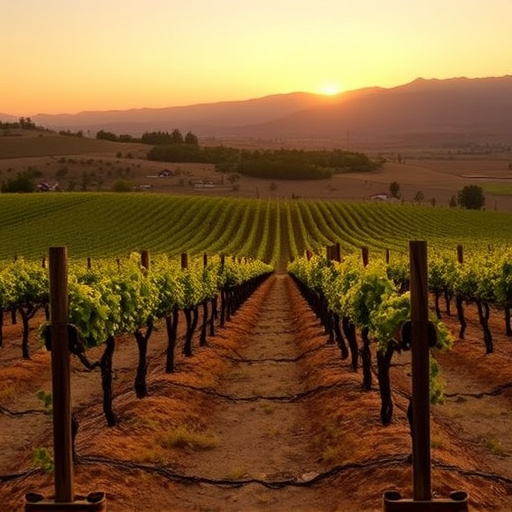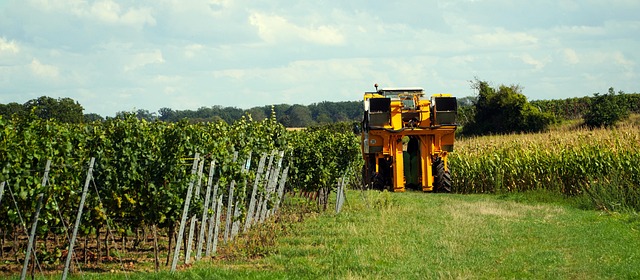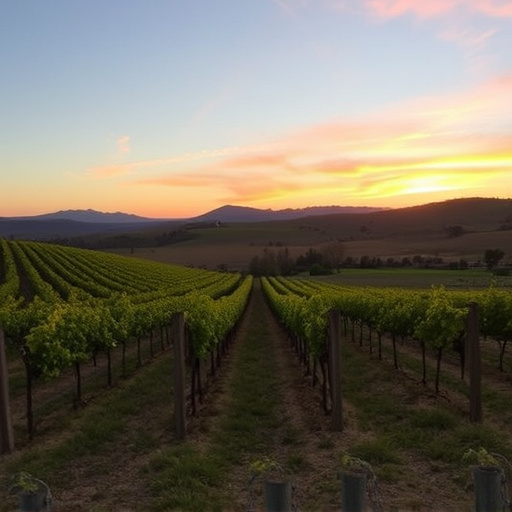Sonoita vineyards in Arizona's Sonoran Desert thrive at high elevations, benefiting from unique microclimates and diverse terroirs. These factors produce exceptional wines with complex flavors, ranging from bold reds to delicate whites. The region features a mix of traditional and sustainable wine-making practices, with growing global recognition for its distinctive character and artisanal production methods, making Sonoita a must-visit destination for wine enthusiasts.
“Uncover the enchanting world of high-elevation wines in Sonoita, a region renowned for its vibrant vineyard landscape. This article delves into the intricate comparisons between neighboring estates, exploring their distinct terroirs and the unique characteristics each brings to the table. From tasting notes on varietal differences to insights into sustainable farming practices, we navigate the rich tapestry of Sonoita’s wine culture, providing market perspectives that shed light on the region’s positioning and pricing strategies.”
- Exploring Sonoita's Vineyards: A High-Elevation Focus
- Neighboring Estates: Their Unique Terroir Comparisons
- Tasting Notes: Uncovering Wine Varietal Differences
- Production Practices: Sustainable vs Traditional Approaches
- Market Insights: Positioning and Pricing Strategies
Exploring Sonoita's Vineyards: A High-Elevation Focus

Sonoita, nestled in the heart of Arizona’s Sonoran Desert, is renowned for its high-elevation vineyards that thrive in a unique microclimate. This region offers a distinct advantage with cooler temperatures and lower humidity compared to other nearby areas, making it an ideal haven for viticulture. The vineyards here are not just picturesque; they play a pivotal role in shaping the character of the wines produced in Sonoita.
Exploring these vineyards is like venturing into a vibrant landscape where each estate boasts its own terroir. The high elevations provide a crisp environment, allowing grapes to ripen slowly and develop complex flavors. This focus on elevation ensures that wine enthusiasts can savor the distinct nuances offered by Sonoita’s vineyards, making it a must-visit destination for those passionate about fine wines and the art of viticulture.
Neighboring Estates: Their Unique Terroir Comparisons

The vast and diverse landscape of Sonoita is home to numerous vineyards, each boasting its unique terroir, which significantly influences the character of their wines. When comparing neighboring estates, one cannot help but notice the distinct differences in soil composition, climate patterns, and topography, all contributing to varied wine profiles. For instance, some vineyards sit at higher elevations, benefiting from cooler temperatures and reduced sunlight, resulting in wines with brighter acidity and more nuanced flavors. In contrast, lower-lying vineyards may experience warmer days and longer sun exposure, leading to fuller-bodied wines with richer textures and deeper fruit notes.
Additionally, the specific soil types found in each vineyard play a crucial role in wine quality and style. Some estates boast well-draining sandy soils that encourage deep root systems and enhance flavor concentration in the grapes, while others may have heavier clay soils that retain moisture, adding complexity to their wines. These variations create an intriguing diversity among Sonoita’s vineyards, allowing wine enthusiasts to explore a wide range of flavors and aromas unique to each estate.
Tasting Notes: Uncovering Wine Varietal Differences

Tasting notes offer a fascinating glimpse into the subtle nuances that distinguish one sonoita vineyard from another. By examining the unique characteristics of each wine, such as aroma, flavor profile, and texture, enthusiasts can uncover distinct differences stemming from varietal choices. For instance, Cabernet Sauvignon from sonoita vineyards often showcase blackcurrant and blackberry notes, with a firm tannin structure and a lingering finish. In contrast, Zinfandel may present a more robust palette of dark fruit, spice, and peppercorns, followed by supple tannins.
These varietal differences are further influenced by the specific microclimates and soil types found within each estate. Higher elevations generally contribute to later harvests and slower ripening, allowing for a greater concentration of flavors in the grapes. As a result, wines from these regions often exhibit more intense fruit expressions, enhanced acidity, and balanced alcohol levels. Tasting these wines side by side can be a revelatory experience, highlighting the artful interplay between terroir and winemaker craft within the vibrant sonoita vineyards landscape.
Production Practices: Sustainable vs Traditional Approaches
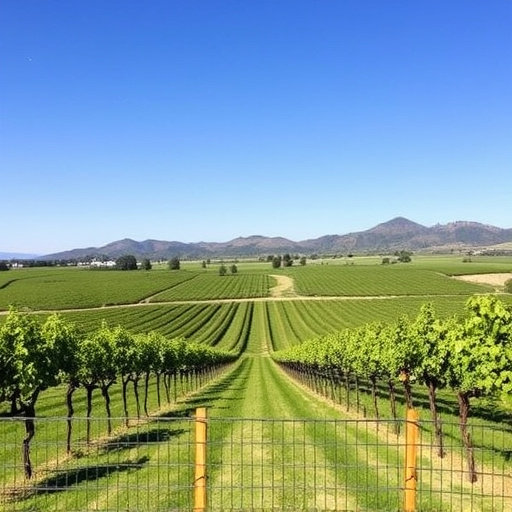
In the heart of Arizona’s Sonoran Desert, Sonoita vineyards thrive at high elevations, benefiting from unique terroir. When comparing neighboring estates, one striking difference emerges: production practices. Some stick to traditional methods, valuing age-old techniques that minimize intervention. These wineries often rely on manual labor, organic practices, and native yeast fermentations. In contrast, others embrace sustainability, employing eco-friendly strategies like renewable energy sources and precision viticulture, aiming to reduce their environmental footprint while maintaining quality.
This dichotomy offers wine enthusiasts a fascinating glimpse into the future of Sonoita vineyards. Traditional approaches highlight the region’s deep historical roots, while sustainable practices demonstrate its forward-thinking spirit. Each method contributes to the diverse character of high elevation wines from these neighboring estates, ensuring that Sonoita remains a vibrant and distinctive player in the global wine scene.
Market Insights: Positioning and Pricing Strategies

The market for high-elevation wines from Sonoita vineyards has been growing, driven by a global appreciation for unique terroir and artisanal production methods. Each estate offers its own distinct style, with some focusing on bold reds like Syrah and Tempranillo, while others excel in delicate whites such as Viognier and Grenache. This diversity allows consumers to explore diverse flavor profiles and supports the positioning of Sonoita wines as premium, high-quality offerings.
Pricing strategies vary among estates, reflecting their unique brands and market positioning. Premium pricing is common for limited-edition or estate-bottled wines, leveraging the scarcity and perceived exclusivity of high-elevation production. Conversely, some estates offer more affordable options to appeal to a broader customer base, recognizing that accessibility can drive interest in this region’s distinctive wines.
The high-elevation vineyards of Sonoita have emerged as a prominent wine region, distinguished by its diverse terroirs and unique microclimates. By comparing neighboring estates, we’ve uncovered intriguing variations in production practices, from traditional methods to sustainable innovations, shaping the distinct character of each estate’s wines. As the Sonoita vineyards continue to gain recognition, understanding these comparisons is vital for both producers and consumers alike, ensuring the region’s vibrant future and showcasing its exceptional wine offerings on the global stage.
